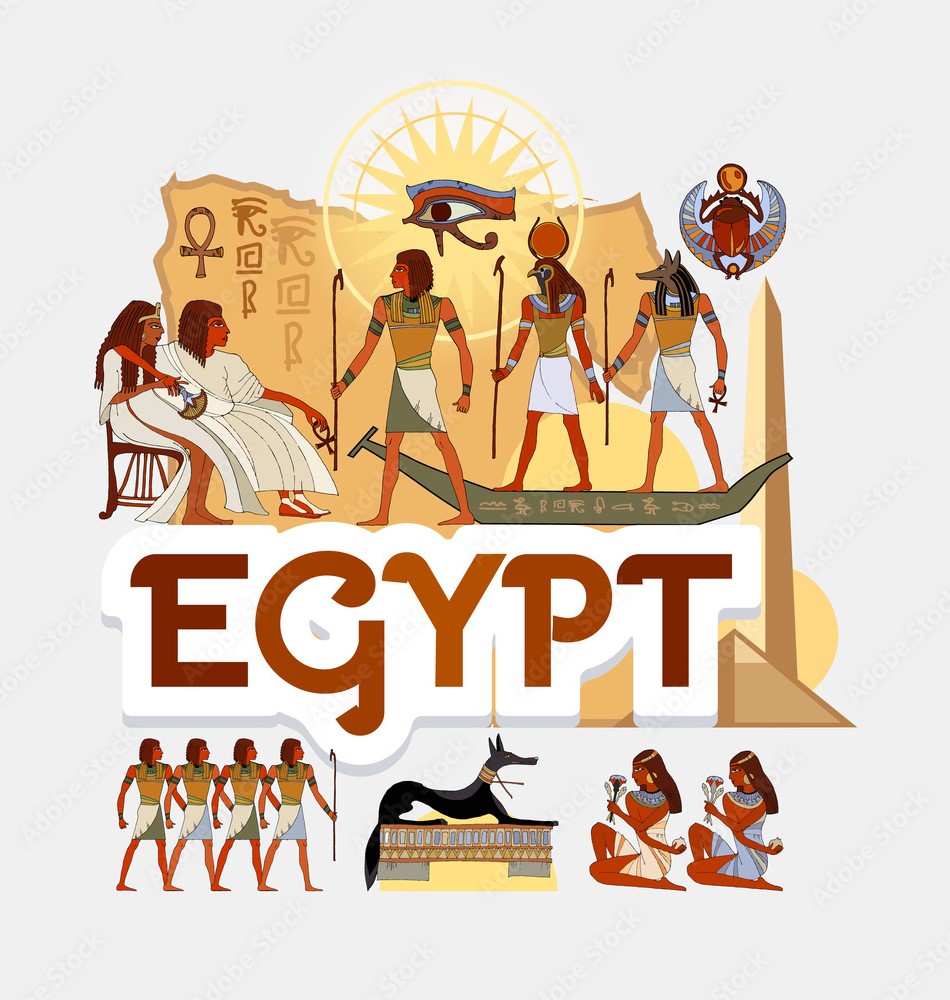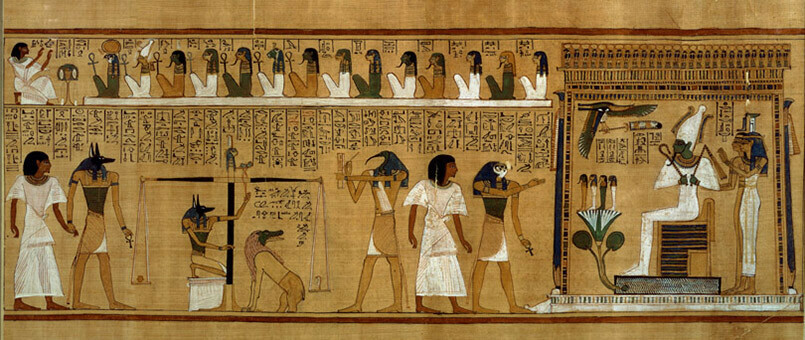
In ancient Egypt, religion infused every facet of existence, from the sandstone blocks that built the mighty temples to the very grain harvested along the life-giving Nile. The Egyptians revered a multitude of gods and goddesses, each embodying aspects of the natural world and human experience. I strive to unwrap the complexities of their polytheistic system to offer insights into their deep reverence for the divine.
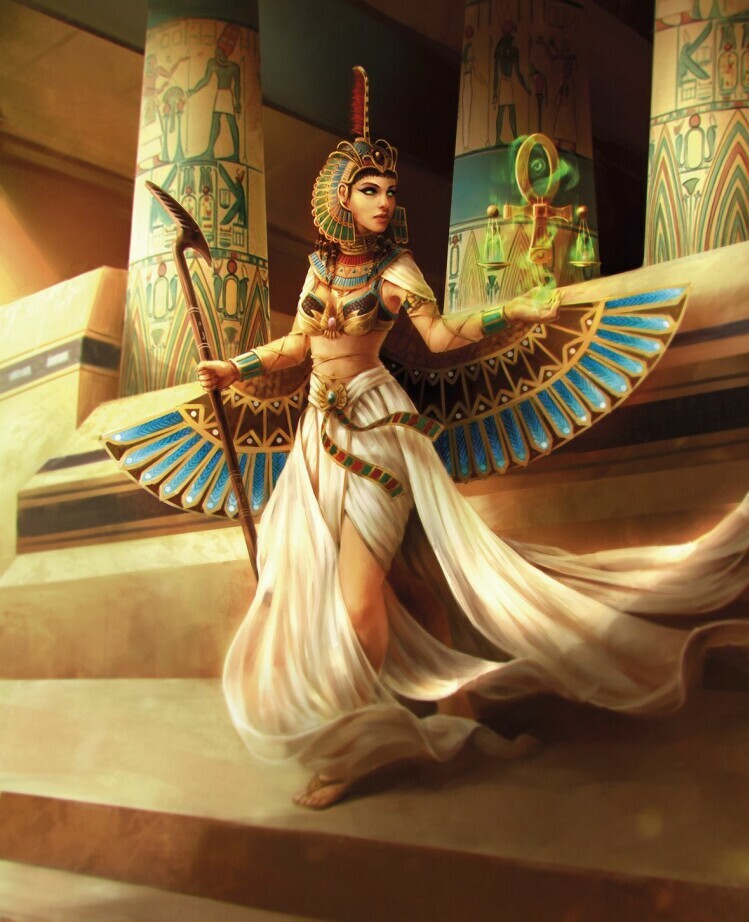
Priests and priestesses served pivotal roles as intermediaries between the deities and the people. With meticulous attention to ritual, they upheld MAAT, the cosmic equilibrium, ensuring the universe’s harmonious functioning. Temples dotted the landscape, each a focal point for worship and communal gathering. It was within these pillars, amidst murals and incense, that the Egyptians sought the favor of their patrons through ceremonial rites.
The elaborate calendar of ancient Egypt was distinguished by its religious festivals. In seeking the blessing of the gods, Egyptians engaged in a succession of feasts and celebrations. These events were not mere acts of piety; they served to align the community with the divine order, reinforcing social bonds, and affirming the gods’ goodwill.
The rhythm of religious observance set the stage for their beliefs about death and the afterlife. As we next explore the ancient Egyptians’ burial customs, we see the continuation of their profound commitment to the gods, now transmuted into practices to honor and prepare the deceased for their journey to the eternal.
Journey to the Afterlife: The Sacred Art of Mummification and Burial
The journey to the afterlife was a central theme in the life of an ancient Egyptian. They regarded death not as an end, but as a transformation into a new state of being. To ready an individual for this transmutation, mummification was performed with great care. This preservation of the body was more than a mere funeral tradition; it was an essential rite that enabled the soul’s survival beyond mortal existence.
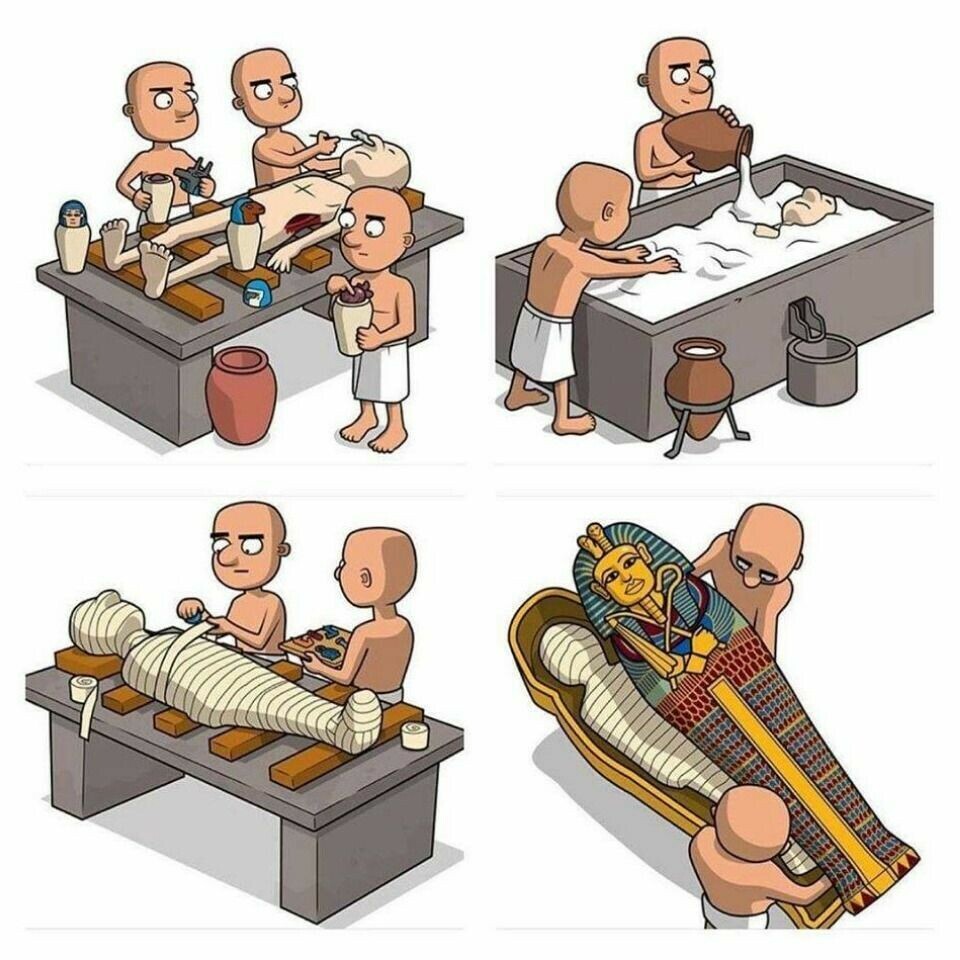
The process of mummification involved removing internal organs, drying the body with natron, and wrapping it in linen. It was part science, part ceremony, carried out with a reverence due only to the divine. Such great efforts were made because of the belief in the ‘ka’ and ‘ba,’ elements of the human essence that would roam in the afterlife and require a well-preserved vessel to return to.
Even in death, status was apparent. The grandeur of one’s final resting place was a reflection of their earthly means. Pharaohs and nobles were laid to rest in monumental pyramids or elaborate rock-cut tombs, which were filled with valuable items ranging from jewelry to daily utensils. These ‘grave goods’ were more than mere possessions; they served as essentials for comfort and sustenance in the afterlife journey.
The principles and practices of burial in ancient Egypt illustrate a culture deeply invested in the metaphysical journey beyond death. This belief system carved not only the tombs of the elite but also the very structure of their society, which we’ll explore next when we discuss the hierarchy and social structure of ancient Egypt.
In the Shadow of the Pharaohs: Society and Hierarchy in Ancient Egypt
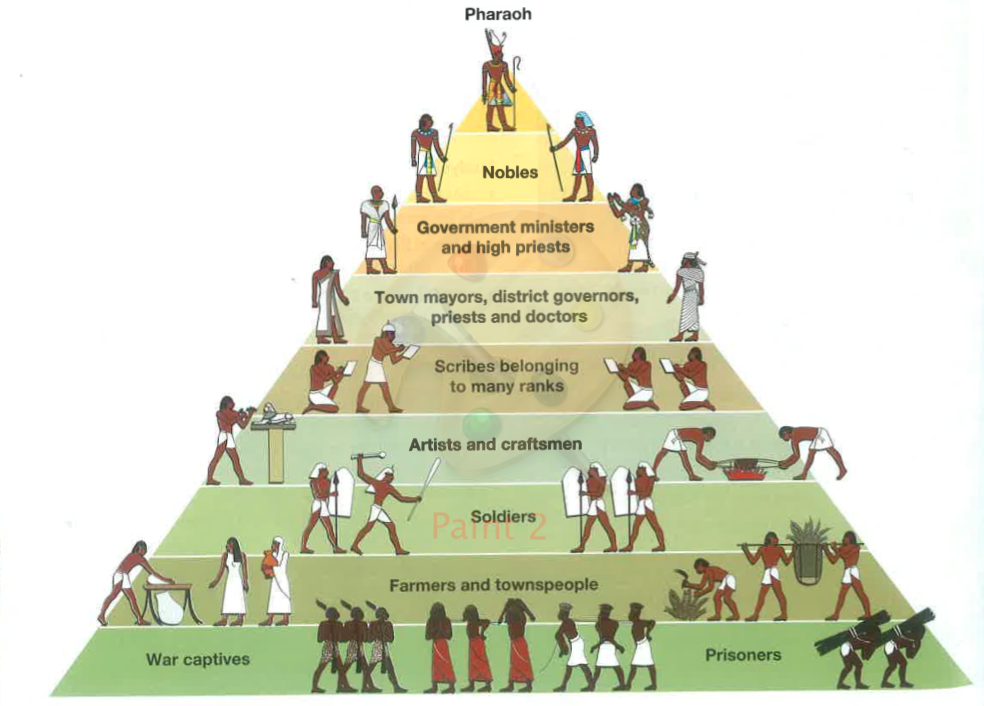
I often reflect on ancient civilizations and how their structured societies laid the groundwork for modern cultures. In ancient Egypt, the social hierarchy was as complex and elaborate as the designs on a pharaoh’s sarcophagus. This hierarchy was a pyramid in itself, with the pharaoh at the apex, regarded as both a king and a god on Earth, embodying the divine right to rule.
Beneath the pharaoh, the social structure branched out to include the royal family and the high-powered elite – these were the viziers, the nobles, and the temple priests. The viziers acted as the pharaoh’s trusted advisors, the nobles had their wealth and land, and the priests wielded immense influence as intermediaries between the people and the gods. These high-ranking officials played crucial roles in governing the kingdom and maintaining ma’at – the concept of cosmic order and balance.
Further down the pyramid, the bulk of the population comprised scribes, artisans, and farmers. Scribes, esteemed for their knowledge of hieroglyphics and literary skills, kept the state’s records. Artisans created the artifacts and monuments that define ancient Egyptian art today. Meanwhile, farmers toiled to produce the food that sustained the entire kingdom, with the Nile’s annual floods rejuvenating the soil and ensuring bountiful harvests.
At the base of the social structure were the slaves and servants, often captives from foreign lands or individuals in servitude due to debt. They undertook the most physically demanding work – tilling the fields and building the monumental structures that have withstood millennia.
It’s important to remember that, unlike today’s society where social mobility is idealized, in ancient Egypt, one’s place in the hierarchy was normally fixed from birth, a reality dictated by lineage and profession. However, unique talents, especially in craftsmanship or scholarship, could occasionally afford someone a rare opportunity to ascend socially.
Understanding this rigid yet intricate social tapestry sets the stage for grasping other facets of Egyptian life, such as family and marriage, an area where women, you may be surprised to learn, enjoyed considerable rights and independence compared to their contemporaries in other ancient societies.
Hearth and Home: The Fabric of Family and Marriage in Ancient Egypt
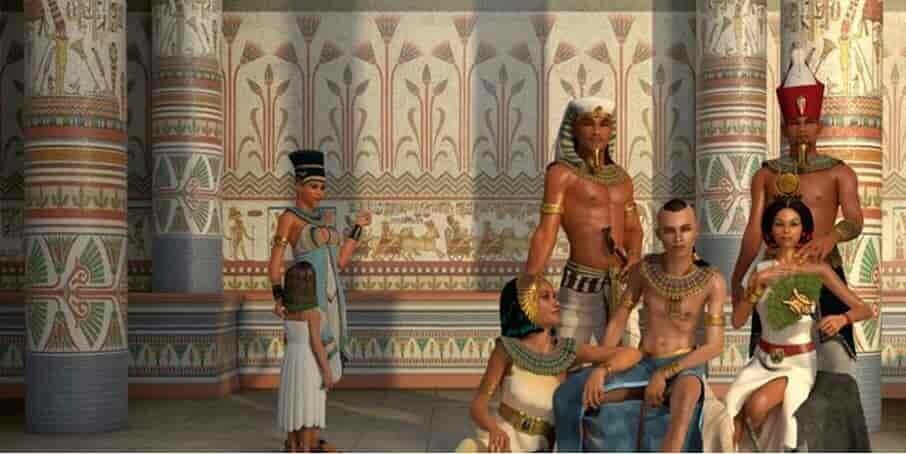
I find family in ancient Egyptian society quite fascinating. It served as a fundamental building block of their society, reflecting broader values and norms. The family unit was patriarchal, similar to other ancient societies, with the father figure holding legal and moral authority over the household. However, within these families, women could exercise significant influence. They were entitled to own property, initiate divorce, and engage in business deals, which signified a degree of egalitarianism in domestic affairs that was rare for the period.
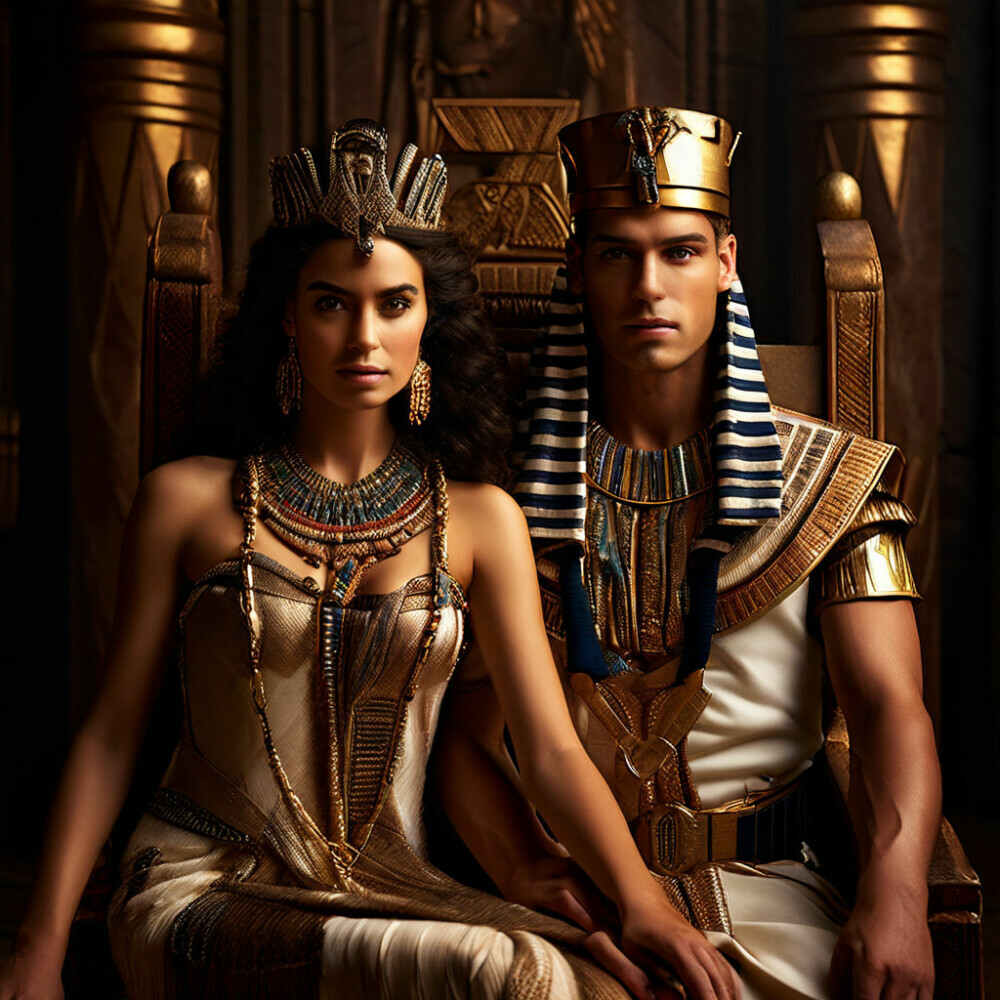
Marriage in ancient Egypt wasn’t just a personal commitment; it was a moral and social one that reinforced the community’s fabric. Couples were often arranged by their families, ensuring alliances and the continuity of property lines. Despite this, there’s evidence suggesting that love and companionship were valued in marital relationships. The rights bestowed on women within marriage legally protected them and provided a social structure that placed considerable importance on the union’s sanctity.
Respect for marriage was paramount, with adultery being frowned upon and usually leading to severe consequences. Fidelity was a virtue that was extolled in wisdom literature and moral teachings, reflecting the significance Egyptians placed on maintaining a stable family unit. Children were equally important and were considered blessings that perpetuated one’s lineage. Their upbringing and education, particularly for boys who could attend scribal schools, were of great societal importance.
Transitioning into the realm of public celebration, the integral nature of family life often spilled over into communal festivities. Moments of private joy paralleled the public revelry that characterized ancient Egyptian festivals and celebrations. These events reminded everyone of their place in the grand tapestry of the Egyptian civilization and served as a bond among families, communities, and the gods they revered. Just as individuals had their roles within the family, each family had its place within the broader context of society, coming together during religious and agricultural festivals to celebrate the cycles of life and the bounty provided by the land and the Nile.
Feasts of the Gods: The Vibrancy of Ancient Egyptian Festivals and Celebrations
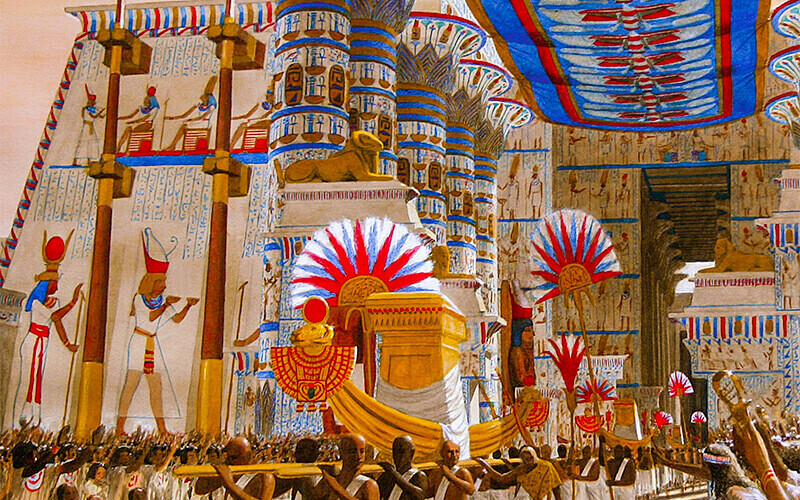
Ancient Egyptian culture was no stranger to celebration. The nation’s calendar bloomed with festivals and holidays that imbued society with rhythm and joy. Integral to these were the gods and goddesses, who stood front and center during these vibrant occasions.
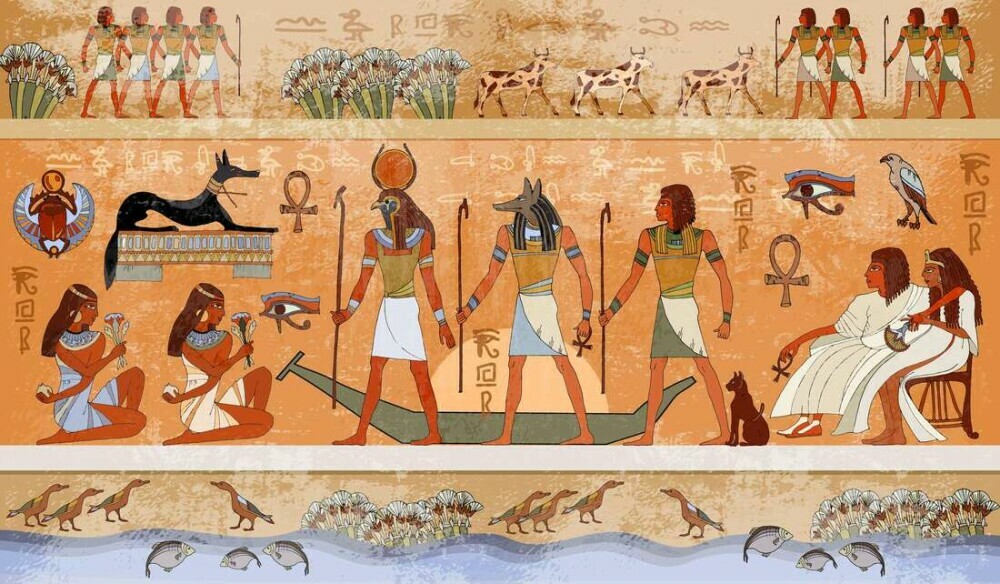
Imagine the scene where the Nile began its annual flooding, a festival known as Wepet Renpet, or the Opener of the Year, unfolded. Communities would come alive with processions and the air rang with music. It wasn’t just a natural phenomenon they marked; it was a celebration of Hapi, the god of the Nile, who brought fertility to the land and sustenance to the people.
Drums and lyres set the pace, while dancers dressed in colorfully embellished clothing swayed to tunes that have since been lost to time. The community gathered to feast, sharing food and drink as tangible manifestations of gratitude to their deities. It was a rare moment for all social strata to mingle, united in their reverence and their human need for sustenance and prosperity.
Studiously observing these proceedings were the priests, who upheld the proper rituals to ensure the gods remained pleased. Such celebrations often included offerings in temples and sacred sites, reinforcing the bond between the divine and the mortal realms.
Even as the festivities honored deities, they also worked to reinforce social cohesion, bringing together members of society who would otherwise be separated by the rigid stratification that defined everyday life. In essence, these festivals were an affirmation of identity, a unified front in a society that fundamentally understood the necessity of balance—from the ruler to the ruled, from the heaviest floodwaters to the tiniest grains of sand along the riverbank.
Chiseling History: The Everlasting Impact of Egyptian Art and Culture
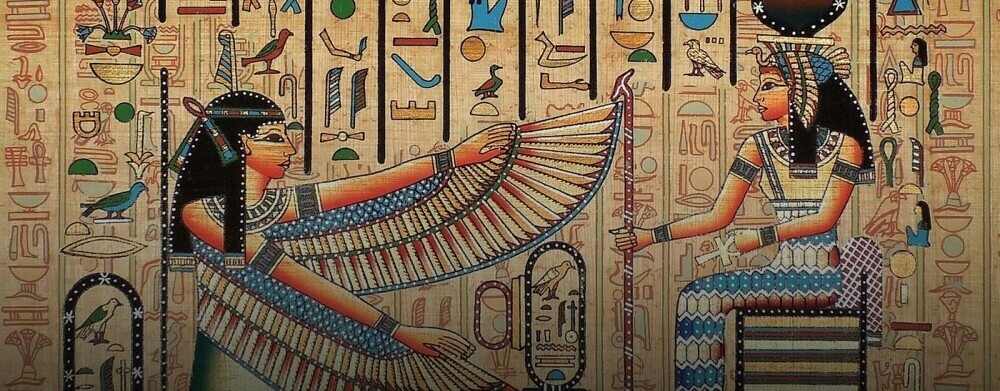
Egyptian art is not just about stunning visuals; it’s a narrative frozen in time, one that gives us a glimpse into the souls and soil of an ancient land. It was an integral part of their civilization, with its purpose ranging from religious to administrative, reflecting society’s religious beliefs, values, and traditions. You could say art functioned much like a historical record, chronicling everything from divine to daily scenes.
Sculpture was one of the most prominent art forms, often colossal and always imposing, carved with the intent to last an eternity. These statues of gods, pharaohs, and mythical creatures were not just displays of power and devotion but also served as eternal homes for spirits.
The colors that decorate the walls of tombs and temples tell stories that are thousands of years old, yet they still resonate with vivid life. Murals and carvings depict scenes of agriculture, warfare, and festivities, encapsulating the vigorous life along the Nile.
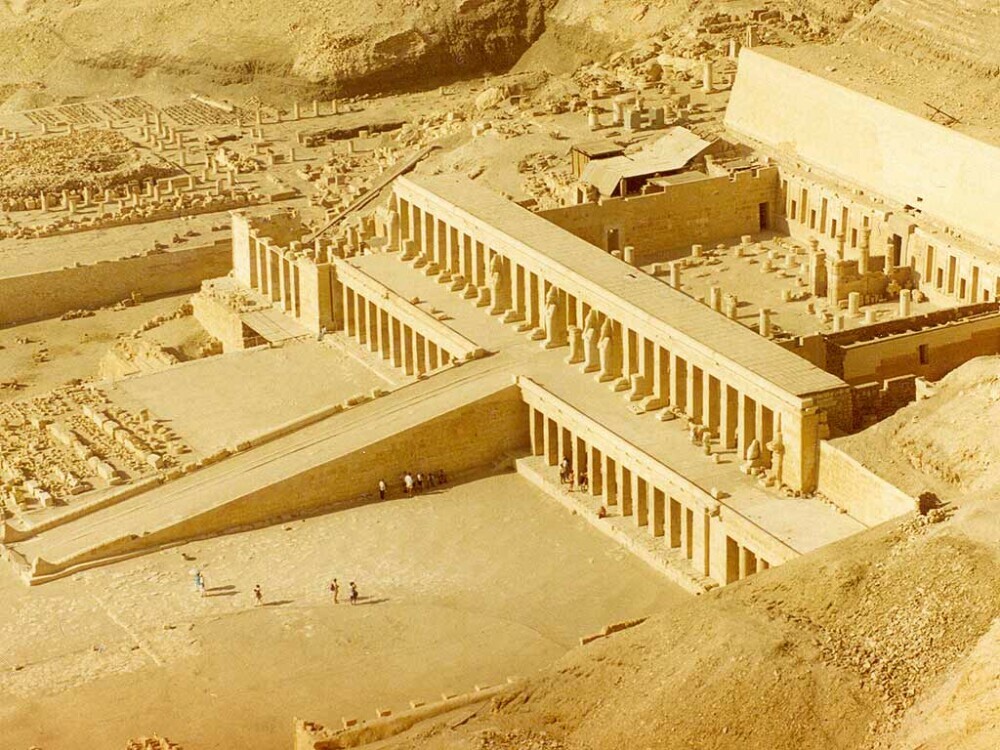
Architecture, in particular, stands as one of the lasting legacies of ancient Egypt. Structures such as the Great Pyramids and the Sphinx not only symbolize technological and artistic achievements but also reflect the profound relationship between their creators and the divine realm.
Literature, although not as tangible as pyramids or sphinxes, was no less significant. It included religious texts, poetry, and tales that offer rich insights into philosophical thought, morality, and the Egyptian quest for understanding life and death.
The reflection of the treasures of ancient Egyptian culture in our current lives is undeniable. From museum exhibits to references in pop culture, these artifacts continue to reveal the depth of the civilization that crafted them. As one era led to the next, Egyptian influence would sow seeds of inspiration far and wide, preparing the soil for a harvest of knowledge that would nourish disciplines as diverse as art history and archaeology.
Echoes of Eternity: The Timeless Legacy of Ancient Egyptian Customs
As I draw this exploration to a close, it’s clear the customs and traditions of ancient Egypt aren’t merely relics of the past. These traditions continue to capture imaginations and infuse contemporary culture with their mystique and grandeur. Examining these customs isn’t just an academic exercise; it offers a window into the values and aspirations of an ancient civilization that has shaped human history in profound ways.
From awe-inspiring pyramids that punctuate the landscape of modern Egypt to well-known storytelling motifs that originated on the banks of the Nile, the influence of this ancient society is undeniable. Egyptian mythology and iconography find their way into films, literature, and art, speaking to the universal themes and human experiences that transcend time and geography.
This legacy holds more than just aesthetic and historical value—it informs today’s scholarship and continues to inspire researchers in fields as diverse as archaeology, linguistics, and philosophy. So profound is Egypt’s footprint that understanding it remains essential for those seeking a more complete picture of the world’s cultural heritage.
By honoring the wisdom and achievements of the ancient Egyptians through continuous study and appreciation, we ensure that their legacy is not lost to the sands of time but remains a pivotal chapter in the story of human civilization.

